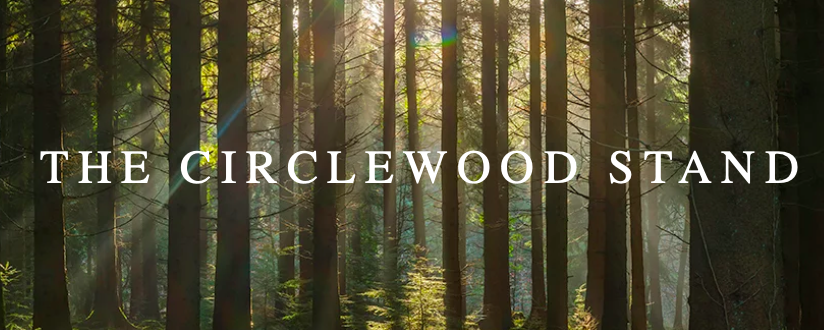One of the losses in recent days from the Russian invasion of Ukraine is the Ivankiv Historical and Local History Museum (burnt to the ground last week). Among other work, it held a large number of paintings by Maria Prymachenko, probably the most well-know Ukrainian artist. A folk artist who lived from 1909-1997, she practiced "naïve art," a category for art that is simple, unaffected, and unsophisticated. It is also usually applied to artists who haven't been formally trained, such as Prymachenko and Henri Rousseau.
Prymachenko began drawing while she was tending geese her father had bought to keep her occupied. She started drawing in the sand by the duck pond and one day, when she found blue clay on the shoreline, she brought it home and painted the inside walls of her family's house. Her neighbors admired it and began asking her to decorate their houses as well. Word of her craft spread.
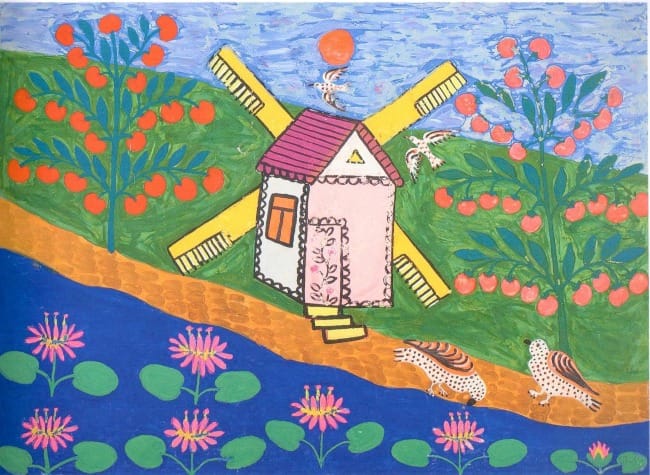
Prymachenko's mother was a skilled embroiderer (as Prymachenko herself became) and her grandmother painted traditional Easter eggs; the influence of both of these crafts can be seen in Prymachenko's paintings.
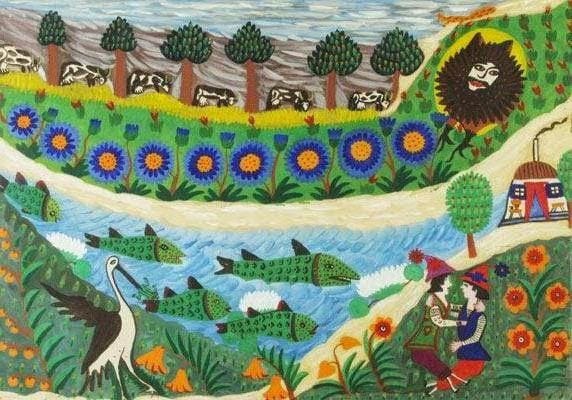
The highly textured nature of some of her paintings (such as "Little Shepherds" pictured above) mimics the knots and stitches of embroidery. The dots on the fish bodies look to me exactly like the french knots that I used to stitch into my own embroidery projects.

You can see echoes of decorated eggs in the dense patterns of her work and the rows of images that she fills her work with. The lines, dots and shapes painted on the eggs pictured are a style that can be spotted in her paintings; aspects of her work that root it within her heritage and homeland.
When painting, Prymachenko used inexpensive paper and factory-made brushes; she painted with gouache, which is an opaque watercolor made of natural pigment, water, and a binding agent, which creates a bright and thick decorative base. It can be re-wetted and dries to a matte finish, and can be layered. This may not be very different from the blue clay she first decorated walls with.
The subject of Prymachenko's work is what she knew from her lifelong home in the village of Bolotnia, the Ukrainian folk poetry she had grown up with, and what came out of her imagination. As she said,
“I love to paint how people work in the field, how young people walk, like a poppy is blooming. I love all living things, I love the forest, flowers, various birds and forest animals. I dress them in folk clothes, and they are so funny with me, they already dance ... ".
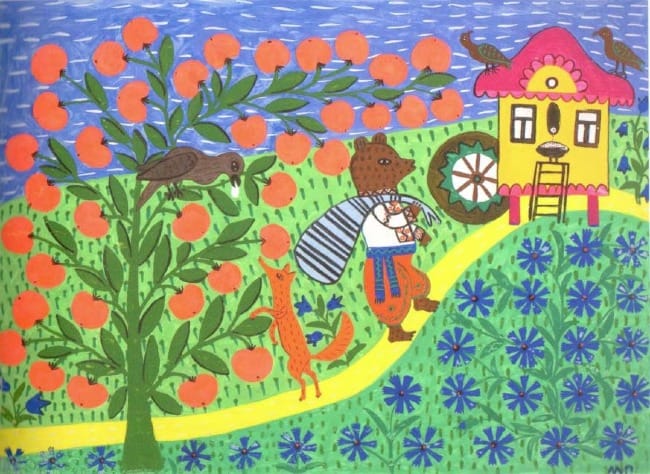
Prymachenko’s paintings feature elaborately plumed birds and dressed animals that take on the actions of humans: arguing, playing music, eating, and taking strolls together. She placed them within the traditional life of the Ukrainian countryside, giving a picture of what that life was like, all with her own quirky and imaginative slant to it.
As you look at her paintings, the importance of relationship is clear and central. In the picture below, this is emphasized by the physical connection between the string of characters, with reigns in the hand of each one connecting them to creature in front of them. The two touches of humor are the huge green turnip on the horse's back and the fact that it appears to be the smallest figure—the rabbit—who is ultimately in charge of this procession.
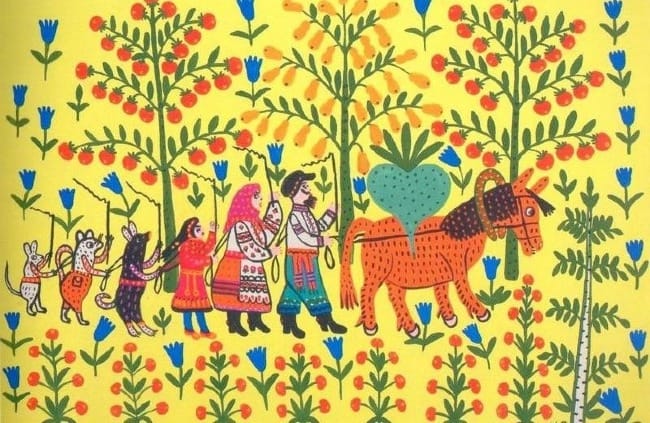
Her paintings that contain a narrative, and which have several figures within them, are consistently in a horizontal format, like an illustration of a storybook. In fact, her paintings have been used as storybook illustrations.
When she created more formal compositions, such as the vase of flowers pictured below, she consistently used a vertical format instead.
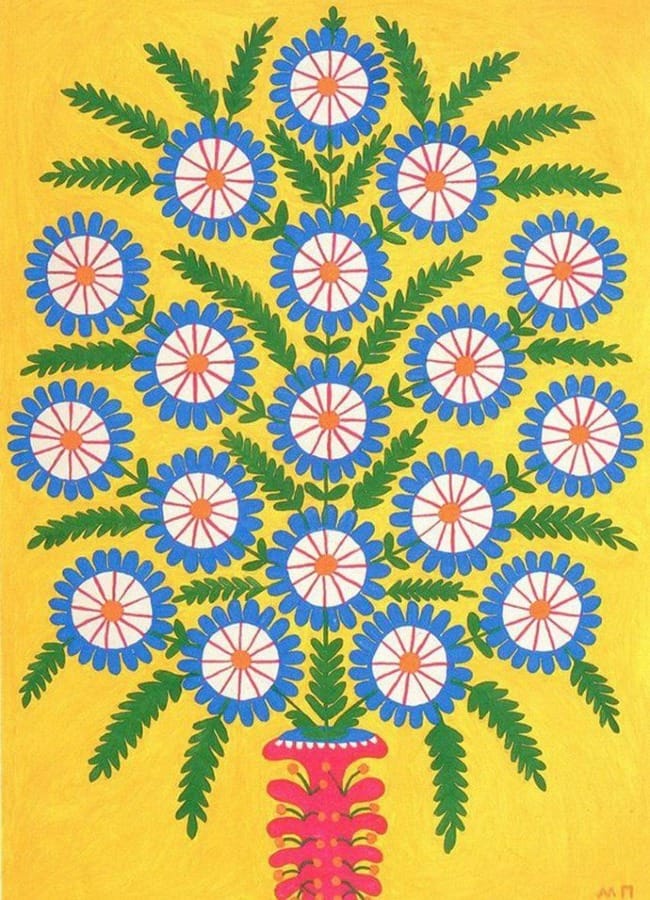
It is easy to see the delight that Prymachenko took in the world around her, but there is an awareness of the evil in the world (disharmony) as well as the good (harmony). For those who study Prymachenko's work, they call this her "philosophy of the good." The good is represented by mostly recognizable animals that portray kindness in her paintings—lions, bears, rabbits, storks, sheep. Evil is represented by a different kind of creature, pulled from her dreams and imagination—monsters and dragons, creatures with gaping mouths and long tongues, often brandishing claws and armor as well. They emanate exploitation and greed.
She drew directly from her own experiences when representing this evil in her paintings. The father of her child was killed in WWII before they were able to marry, and the fact that she didn't know where his body was crops up throughout her paintings in various graveside scenes. She knew of other kinds of devastation as well. Living near the Chernobyl nuclear site, she knew the destruction it caused and painted a series of pictures centered around that event, one of which is pictured below.
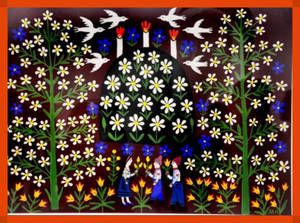
To her, war was the main manifestation of evil in the world and its representation was a focal point in many of her works. Good forces are those that protect against war and evil forces are those which would bring about war. The painting below, titled, "Our Army, Our Protectors," suggests that the plants and animals, and even the sun, living harmoniously together, are all part of the forces that keep evil at bay. Through their unity, they ward off war and the evil inherent in it.
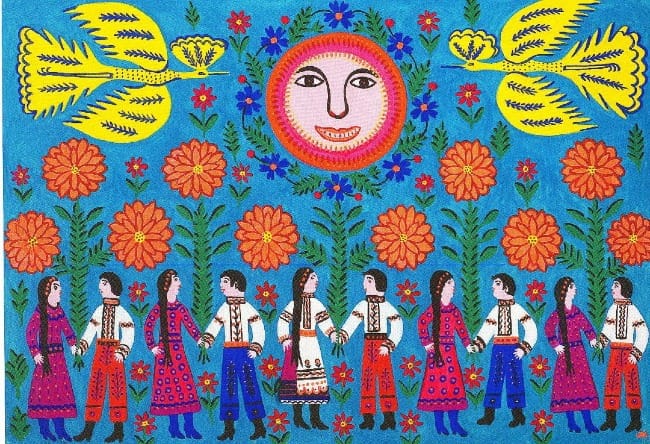
Prymachenko's images of evil are often solitary, exploitative, and greedy. They appear cruel, ferocious and seemingly insatiable in their hunger and drive for power and the use of force.
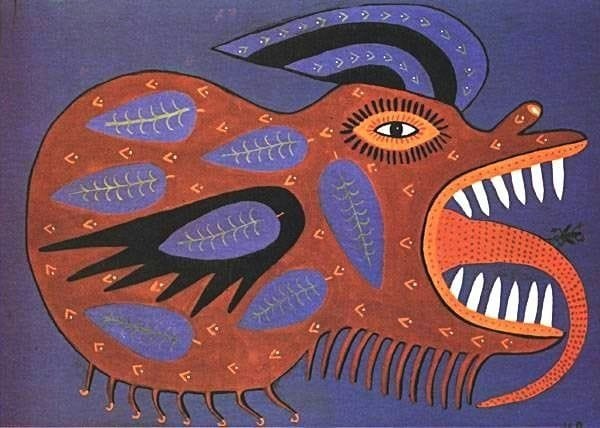
Prymachenko displays her strong feelings toward the destructive forces of the world through the personifications she uses. In the painting below, you can see echoes of modern military equipment in the ornamentation of the monster (stylized missiles, bombs, and helmet) and snaking tongues sprouting from the creature's wide open throat—direct allusions to the Cold War happening at the time. The snake tongues, grasping, searching, greedy, are visual representatives of evil.
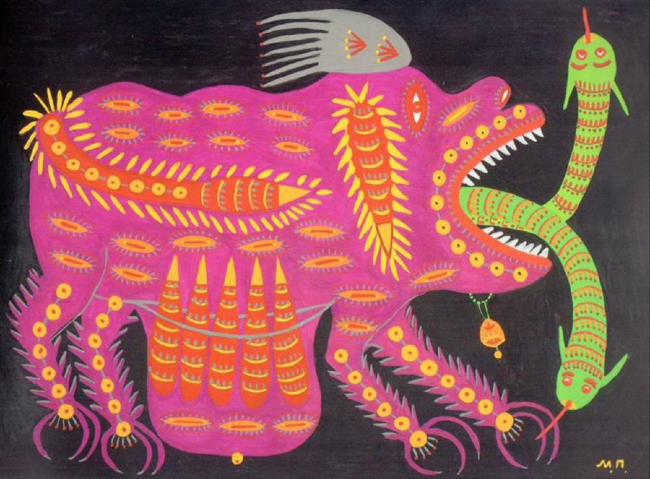
This division of her characters into good and evil is evident in all her work, with her art ultimately showing faith in the triumph of good over evil. Her dream and belief was that hope and peace would prevail. This harmony is what her work often beckons the viewer toward.
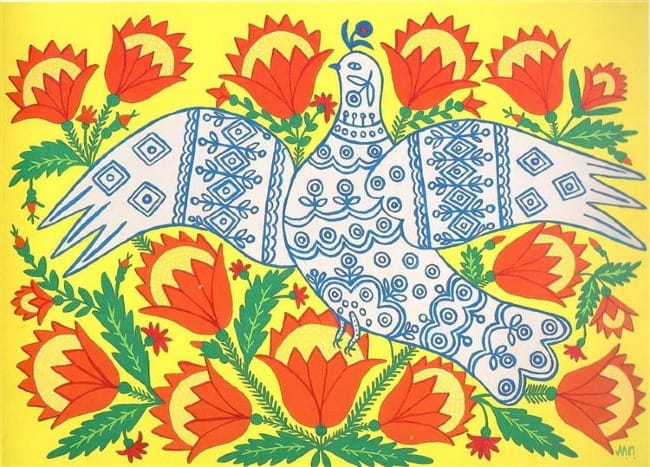
"I make sunny flowers, because I love people, I create joy, for the happiness of people, so that all peoples love one, so that they live like flowers throughout the earth ..."
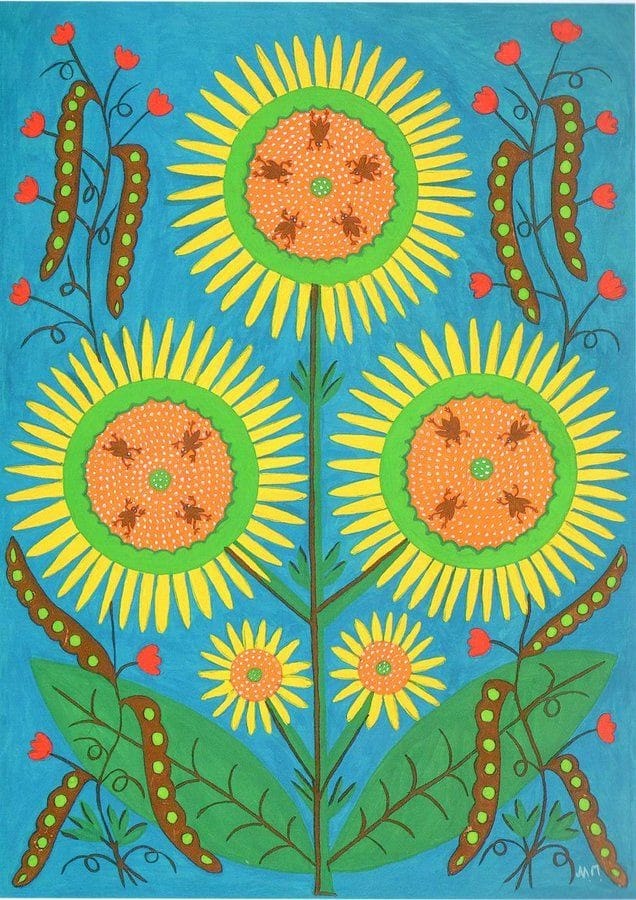
Prymachenko's creations are both a warning against war and a call toward friendship and peace. On the backs of many of her drawings, she wrote captions, and explanatory proverbs and poems, that connect meanings to her images.
" ... and there is a garden in the city,
- all the herbs and flowers,
there are animals of unprecedented beauty."
Her painting titles also make clear what she sees as good and what she sees as evil and which she wants in the world.
“Ukrainian sunflower. May people bring joy and happiness to every home, so that there is Peace throughout the earth "
"Mr. Reagan, Look at This Picture and Think Hard How Heavy, Bulky, and Unreasonable This A-Bomb Is."
"Damn the war! Bombs grow instead of flowers."
Harmony and kindness are central to Prymachenko's work. Differences can be overcome if peace is chosen—peace with others like us, friendship with others unlike us, harmony and contentment with where we are and what we have. These are significant themes no matter what the time, but in light of what is happening in Ukraine, these themes are especially timely and significant.
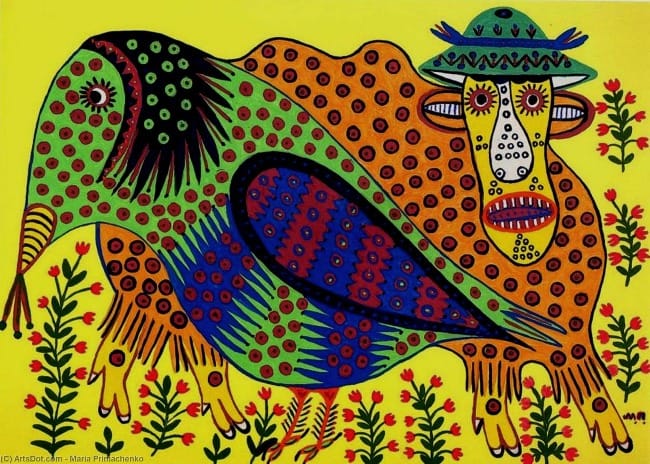
UNESCO declared 2009 the Year of Maria Prymachenko and a street in Kyiv, the capital of Ukraine, was renamed in her honor in the same year. In this particular time, her work continues to remind us that evil is visible and present in this world, but good, too, is present and visible—and the evidence of that is when creatures as different from each other as "Wild Bull" and "Raven" are able to create a friendship between them.
Lord, may good soon prevail and peace return swiftly to the country of Ukraine.
Reflection Questions: Is there a work for peace that you are a part of? Does that work toward peace include both human and non-human creatures?
Louise
Feel free to contact me directly at info@circlewood.online.
Like what you are reading? Consider joining our supporter community, The Circlewood Stand. Click the image below to learn more.
